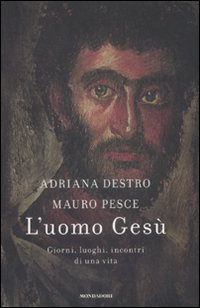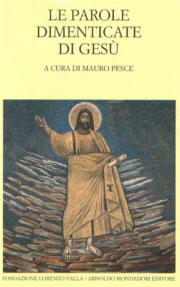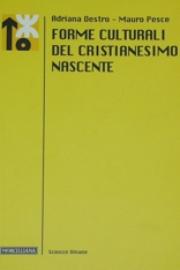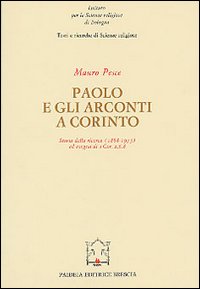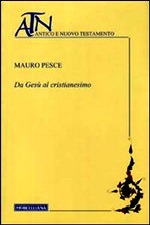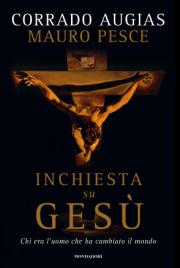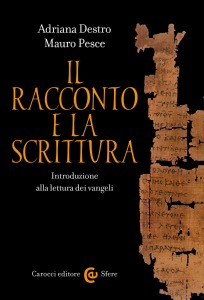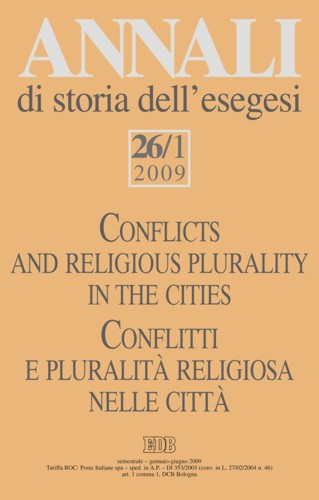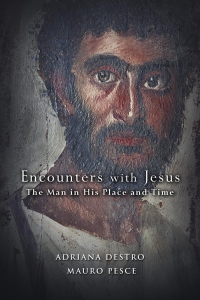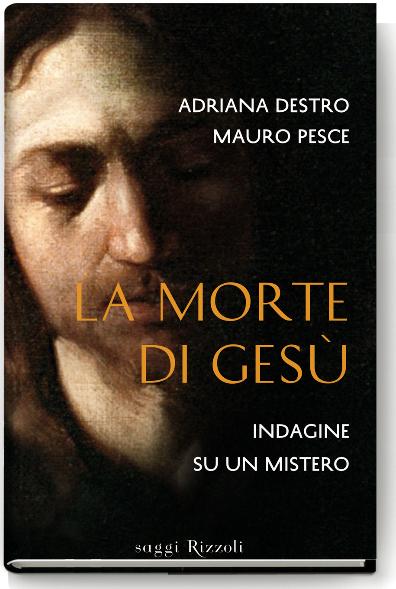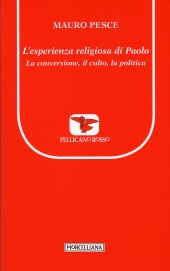Riflessioni sulla natura storica e culturale delle Sacre Scritture giudaiche
- Dettagli
- Categoria: Documenti
- Pubblicato Lunedì, 30 Dicembre 2013 15:19
- Visite: 4048
M.Pesce, “Riflessioni sulla natura storica e culturale delle sacre scritture giudaiche”, Rivista Biblica 2012/4, 445-474.
L'articolo è di fatto una critica alle tesi (fra le quali anche quella di Massimo Naro su Rivista Biblica) che ripropongono l'idea - di fatto antiebraica - della cosiddetta unità dei "due testamenti", che continuano a parlare di "Antico Testamento", espressione che non riconosce la natura ebraica della Bibbia e ripresentano la tesi - difatto antiebraica - dell'interpretazione cristologica delle sacre scrittute giudaiche.
E' purtroppo morto François Bovon
- Dettagli
- Categoria: Documenti
- Pubblicato Martedì, 05 Novembre 2013 16:31
- Visite: 3924
E' purtroppo morto François Bovon dopo una lunga malattia per tumore. Tra le moltissime cose da lui fatte certamente emerge la fondazione dell'AELAC uno degli organismi che negli ultimi 40 anni ha maggiormete contribuito al rinnovamento degli studi sulle origini cristiane. L'amicizia e l'affetto ovviamente sono ancora più importanti.
Allego l'avviso dell'AELAC.
Mauro Pesce
E
Aux membres et correspondants de l’AELAC
Chers Collègues,
C’est avec une immense tristesse que je vous informe que notre collègue et ami, le professeur François Bovon, vient de disparaître dans la nuit du 1er au 2 novembre, à l’âge de 75 ans.
Spécialiste éminent du Nouveau Testament et d’histoire de la littérature chrétienne ancienne, François Bovon a été co-fondateur de l’AELAC et son premier Président de 1981 à 1987. Il a ensuite continué d’être l'un des piliers de l’Association, à laquelle il a toujours accordé son soutien indéfectible, en dirigeant de nombreux projets, ou en animant de nombreuses conférences, ou encore par sa présence fidèle et savante à nos réunions de Dole et de Bex. Parmi les projets éditoriaux pour l’AELAC, on se souviendra en particulier du premier volume des Ecrits apocryphes chrétiens pour la collection de la Pléiade, qu’il avait co-dirigé avec Pierre Geoltrain (1997). En 1999, il avait publié, avec Bertrand Bouvier, l’édition critique des Actes de Philippe grecs (CCSA 11). Ces dernières années, il s’était intéressé aux récits relatifs à Etienne le proto-martyr et à sainte Thècle, en publiant de nombreux articles sur ces traditions; un dernier essai vient de paraître dans Analecta Bollandiana et un autre est actuellement sous presse dans Apocrypha.
Docteur de l’Université de Bâle (sous la direction d’Oscar Cullmann), il fut, de 1967 à 1993, professeur de Nouveau Testament à la Faculté de théologie de l'Université de Genève, dont il a été doyen de 1976 à 1979. En 1993, il fut nommé Frothingham Professor à la Divinity School de l'Université de Harvard, où, par son enseignement et ses recherches, il développa de manière remarquable l’étude de la littérature apocryphe chrétienne. En 2009, il avait co-édité The Apocryphal Acts of the Apostles: Harvard Divinity School Studies, pour la Harvard University Press.
Docteur honoris causa de l'Université d'Uppsala, il a été président de la Société suisse de théologie de 1973 à 1977 et de la Studiorum Novi Testamenti Societas en 2000. De 2000 à 2010, il a été éditeur en chef de la Harvard Theological Review et en 2006, il reçut la Honorary Membership in the Harvard Chapter of Phi Beta Kappa. Parmi ses nombreuses publications, il convient de mentionner encore le monumental commentaire de l’Evangile de Luc, en 4 volumes (publié en anglais, allemand, français, italien et espagnol) ; Studies in Early Christianity (2003) ; The Last Days of Jesus (2006), New Testament and Christian Apocrypha (2009).
Personnalité rayonnante, homme de grande générosité scientifique et humaine, il a laissé un souvenir chaleureux et impérissable non seulement dans le milieu académique, européen et américain, mais aussi tout autour de lui. J’ai appris la triste nouvelle de son décès à Cambridge, non loin de la maison où il avait habité lors de ses années à Harvard. Nombreux sont ceux qui m'ont demandé de ses nouvelles dans le Huron Village et qui ont évoqué son souvenir avec chaleur.
Comme les Grecs le disaient: Koupha soi chthôn epanôthen pesoi “Que la terre te soit légère”. Reste pour nous la lourde tâche d’apprivoiser l’absence.
Au nom du comité de l’AELAC, je tiens à transmettre ici l’expression de toute notre sympathie et de nos condoléances les plus sincères à sa famille pour ce deuil devant lequel nous nous inclinons.
Valentina Calzolari
Présidente AELAC
Annali di Storia dell'esegesi 30/1 (2013)
- Dettagli
- Categoria: Documenti
- Pubblicato Venerdì, 25 Ottobre 2013 12:38
- Visite: 7952
ANNALI DI STIA DELL’ESEGESI 30/2 (20013)
Contents
Early Christian Groups
William Tabbernee, Material Evidence
for Early Christian Groups
during the First Two Centuries C.E........................................ 287-301
The reception of the interpretation of the Talpiot “Jonah fish” image and the (related?) inscription
as presented by Tabor (and Jacobovici) has been negative. This is so not least because it
challenges the current scholarly consensus that Christianity did not produce clearly distinctive
and distinguishable art forms, including funerary art and inscriptions, until ca. 180 C.E. The
Talpiot “Jonah fish,” if it can be definitively proven to be such, will force us to reassess that
consensus. In the meantime we need to recognize that very few likely Christian artifacts able to
be dated prior to 180 C.E. have survived and that the Christian nature of anything earlier than the
beginning of the Antonine period (ca. 138 C.E.) remains highly controversial—including some
other ossuaries which, perhaps, survived until 135 C.E. when Jerusalem was destroyed to create
the Roman city of Aelia Capitolina and Jews (and Jewish-Christians) were banned from the area.
Early Judaism and Early Christianity
Michael A. Daise, Processual Modality in Qumran Ritual:
Induction into the Counsel of the Yachad in 1QS................... 303-315
A new era of Qumran research is ushering in a methodological interest drawn from ritual
studies. The contemporary theory attached to such an approach can be illuminating to the
Qumran corpus, but it risks obscuring it, as well, if done without tandem interest in two more
fundamental matters: the sectarians’ own views on their ritual and a more nuanced reconstruction
of how that ritual was put together. In such light this article builds on previous work and
explores one particular cluster of Qumran rituals—those associated with induction into the
“counsel of the Yachad,” as found in the Serekh Ha-Yachad. It draws three conclusions, based
on (a) a further reconstruction of the components in that process, (b) an exegesis of sectarian
views on those components and (c) the heuristic use of Ithamar Gruenwald’s observations on
the “internal segmentation” of ritual: namely, (1) that an unarticulated ritual of ablutions is
to be inferred into the midst of the induction process; (2) that the efficacy of those ablutions
was deemed by the sectarians to depend on the candidate’s prior participation in the covenant
entry rite; and (3) that, consequently, the sectarian concept of induction into the counsel of
the Yachad involved a “processual mode” occurring between four component ritual events in
that process—the covenant entry rite, the ablutions that precede access to tohorah, the access
to tohorah, itself, and access to mashqeh.
Trent A. Rogers, The Functions of ὥστε
in the New Testament.............................................................. 317-331
Greek grammars adequately treat ὥστε as a subordinating conjunction introducing a final or consecutive
clause. This study gives a fuller explanation of the use of ὥστε as a subordinating conjunction
introducing a descriptive clause; moreover, it provides the first detailed analysis of the use
of ὥστε as an inferential particle introducing an independent clause. An analysis of the semantic
relationships conveyed by the inferential ὥστε demonstrates that this is a marked syntactical structure
that alerts the reader to the prominence of a clause. Lastly this study notices trends of usage in
the NT. The dependent uses of ὥστε tend toward narrative texts with Matthew preferring its use
and Luke avoiding it. More remarkable is that the independent use of ὥστε occurs in all the undisputed
Pauline epistles while the same construction is absent entirely from the disputed Paulines.
On Texts, Scriptures, and Canons:
Three Complementary Approaches
Edmondo Lupieri, To Bible or Not to Bible:
How on Earth Does a Text Become Scripture?
(In Jewish, Christian, and Derived Traditions)...................... 335-345
This contribution aims at showing some ways according to which a written text becomes, or
does not become, Scripture in a given group. Only examples from Jewish, Christian, and derived
traditions will be analyzed, since those are the traditions the author is familiar with, but the
supposition is accepted that analogous mechanisms can be active in similar processes in different
religious realities. This paper will examine examples of two major categories of cases. In the first
category are the cases in which there is already a set of writings which are considered Scripture
by different groups or sub-groups of people belonging to a certain religious complex (in such a
way that they all consider themselves to belong to a specific tradition, distinct from other ones).
Two examples will be briefly described, to see which authority, and in which ways, can decide
which texts are Scripture and which are not. In the second, larger category the author will try to
analyze what can happen when a new text becomes recognized as Scripture—or fails to do so.
Also in these cases the aim is to identify authorities and mechanisms that allow such recognition.
John McCarthy, Script to Scripture: Multivalent Textuality... 347-367
This paper argues that, within the Christian tradition, a fundamental distinction needs to be observed
between the Bible as a written text and the Bible as scripture. After discussing the kinds
of textuality associated with the Bible in most contemporary scholarly study as well as the more
robust theory of textuality characteristic of hermeneutical investigation and well-articulated by
the work of Paul Ricoeur, the paper presents an analysis of the phenomenology of textuality appropriate
to the Bible as scripture. This phenomenology draws on the work of Paul Ricoeur but
reorients it by taking seriously the observation of Wilfred Cantwell Smith that scripture is better
understood as an adverb than as a noun. This phenomenological reflection identifies scripture as
a particular kind of elective intentionality directed to a text, rather than as a characteristic of or
within a text. Combining the robust hermeneutical analysis of textuality with the phenomenology
of scripture, the paper explains three kinds of textuality that are simultaneously present in the Bible
by describing the characteristic spatiality of the various “worlds in front of text.” By grafting a
phenomenological analysis of scripture onto the more conventional textual analysis of the Bible,
the argument better locates the kinds of scholarly study appropriate to the Bible as scripture.
Colby Dickinson, Canons and Canonicity:
Late Modern Reflections
on Cultural and Religious Canonical Texts............................ 369-392
The focus of this essay is to elucidate some of the major characteristics of canons and
canonical norms throughout history. As such, its aims are manifold: to distinguish between
inclusive and exclusive tendencies within canonical forms, to emphasize the significance
of the particularity of language in relation to canons, to explore the mystical foundations of
a canon, to highlight the problematic historical origins of any given canon, and ultimately
to bring to the fore of our analysis the permanent tension between a historical canon and
canonicity, or the desire to establish a canon which persists beyond the birth of a particular
canonical form. By examining each of these topics in succession, this essay intends to bring
some of the core constituent features of canonical forms to the front of our (theological)
understanding of how both canons and the desire to form canons (canonicity) play a major—
though often undisclosed—role in the ‘theological’ grounds that constitute (canonical,
religious) culture tout court.
Religion and Modernity
Cristiana Facchini, Voci ebraiche sulla tolleranza religiosa.
Pratiche e teorie nella Venezia barocca................................. 393-419
This article offers a new insight into the works of famous Venitian rabbis at the outset of
the 17th century. Historia de’ riti hebraici and Discorso circa il stato de gl’Hebrei were
published in 1637 and 1638 in Venice. The authors, Leone Modena and Simone Luzzatto,
were outstanding scholars and rabbis of the lagoon city, where the most ancient ghetto was
established. Both these works received international acclaim and were widely circulated within
European culture from the 17th to the 20th century. The objective of this article is to interpret
these texts within the debate over religious tolerance in early modern Europe, showing that
both Modena and Luzzatto presented a number of interesting theories about religious tolerance
and the place of Jewry in Christian society.
Guglielmo Forni Rosa, Antimoderne:
le saint Jean-Jacques du premier Maritain............................ 421-437
Le premier Maritain a refusé Rousseau en l’associant au romantisme et à la Révolution
française, à tous les maux typiquement modernes de l’individualisme, de l’immanentisme,
du pragmatisme. En fait, Maritain s’alignait alors totalement sur les positions antimodernes et
antimodernistes de la hiérarchie catholique (Sillabo de 1864, décret Lamentabili et encyclique
Pascendi de 1907): il obéissait aux indications de Léon XIII concernant la valorisation du
thomisme (encyclique Aeterni Patris, 1879) et risquait donc d’actualiser Rousseau dans
l’optique de la lutte antimoderniste: il le considérait comme le père du modernisme, voyait
dans son Vicaire savoyard le premier prêtre moderniste, et pouvait donc accuser le genevois
d’immanentisme (Blondel), d’anti-intellectualisme (Bergson), de pragmatisme (James, Le
Roy), etc. Par ailleurs, dans cette période, la position de Maritain ne doit pas se rattacher
uniquement à l’étude du thomisme, mais à sa collaboration (plus intellectuelle que politique)
à un mouvement d’extrême droite, l’Action française, qui fut condamné bien plus tard (en
1926) par l’Église catholique romaine.
Matthew Alan Gaumer, Augustine’s Feud
with the Donatists & Pelagians:
A Problem of Interpreting Paul?............................................. 439-448
he article attempts to ascertain how Augustine was able to arrive on the scene as a nervous
presbyter and rather quickly assimilate himself into a theological reading of Paul that was
digestible to his audiences in North Africa. Though he was faced with a Pauline exegesis
anchored in Cyprian and upheld by the Donatist Church, he succeeded in crafting a method
whereby he could maintain continuity with tradition while at the same time innovating upon
it according to pastoral needs and the theological problems he encountered.
Historical Jesus: History of Research
Viviana Silvia Piciulo, La sommossa silenziosa
di Manuel Lacunza.................................................................. 449-473
The Chilean Manuel Lacunza was one of the Gesuits expulsed from the Spanish domains
in 1767. During his exile in Italy he wrote, between 1784 and 1790, a work in which he
presented a millenaristic interpretation of the message of Jesus: La Venida del Mesías en gloria
y majestad. The book was widely disseminated in Europe and in Latin America in the original
Spanish edition, in clandestine manuscripts, in summaries and also through its translation in
different languages. In presence of the corruption of the Roman Church, Lacunza imagines
the imminent second coming of the messiah Jesus, the restauration of Israel and the beginning
of a millenarian messianic kingdom. The article presents a first historical interpretation of this
work and also a brief history of its reception in the 19th century.
Book Reviews......................................................................... 475-477
Books Received...................................................................... 479-480
